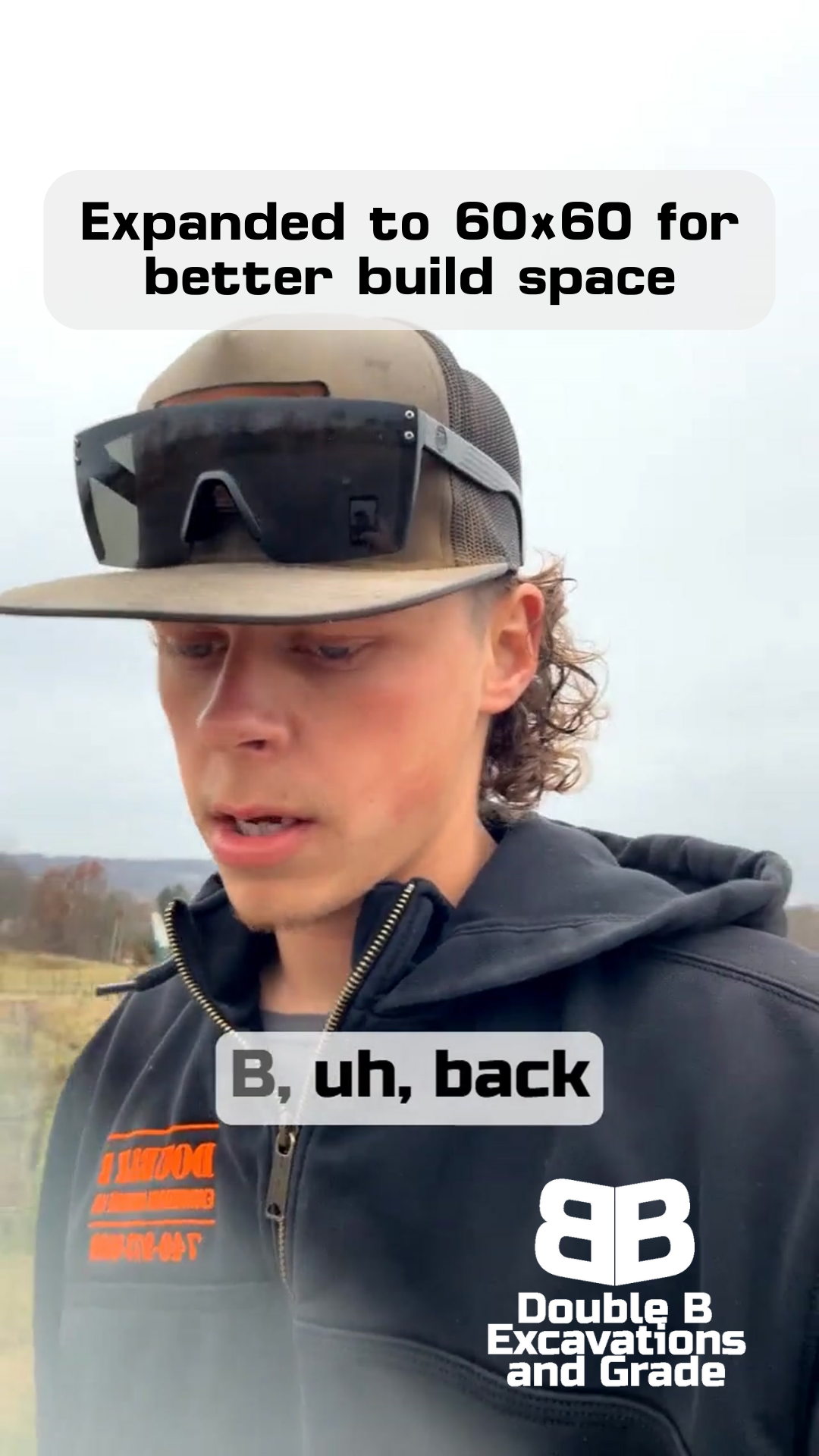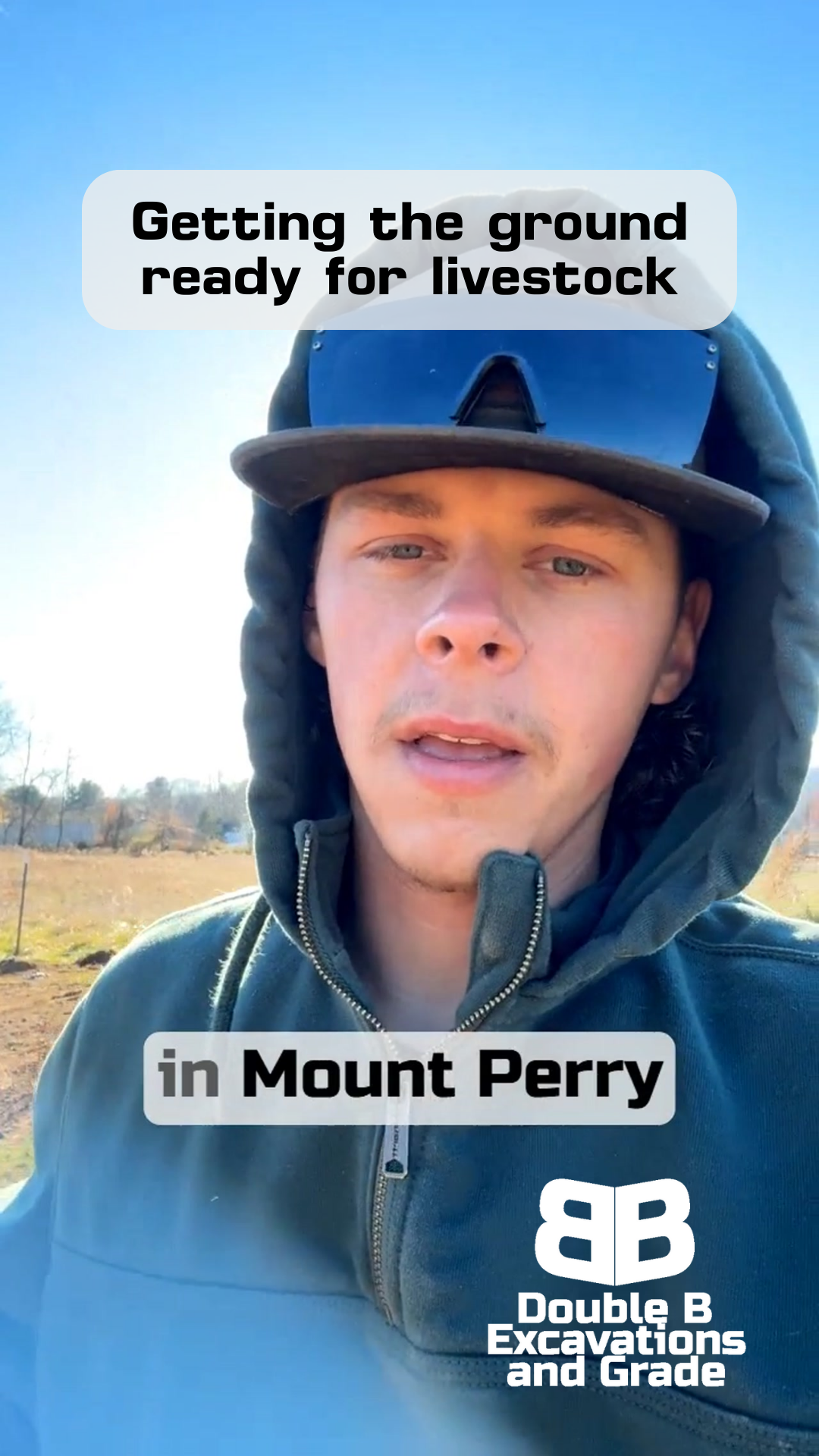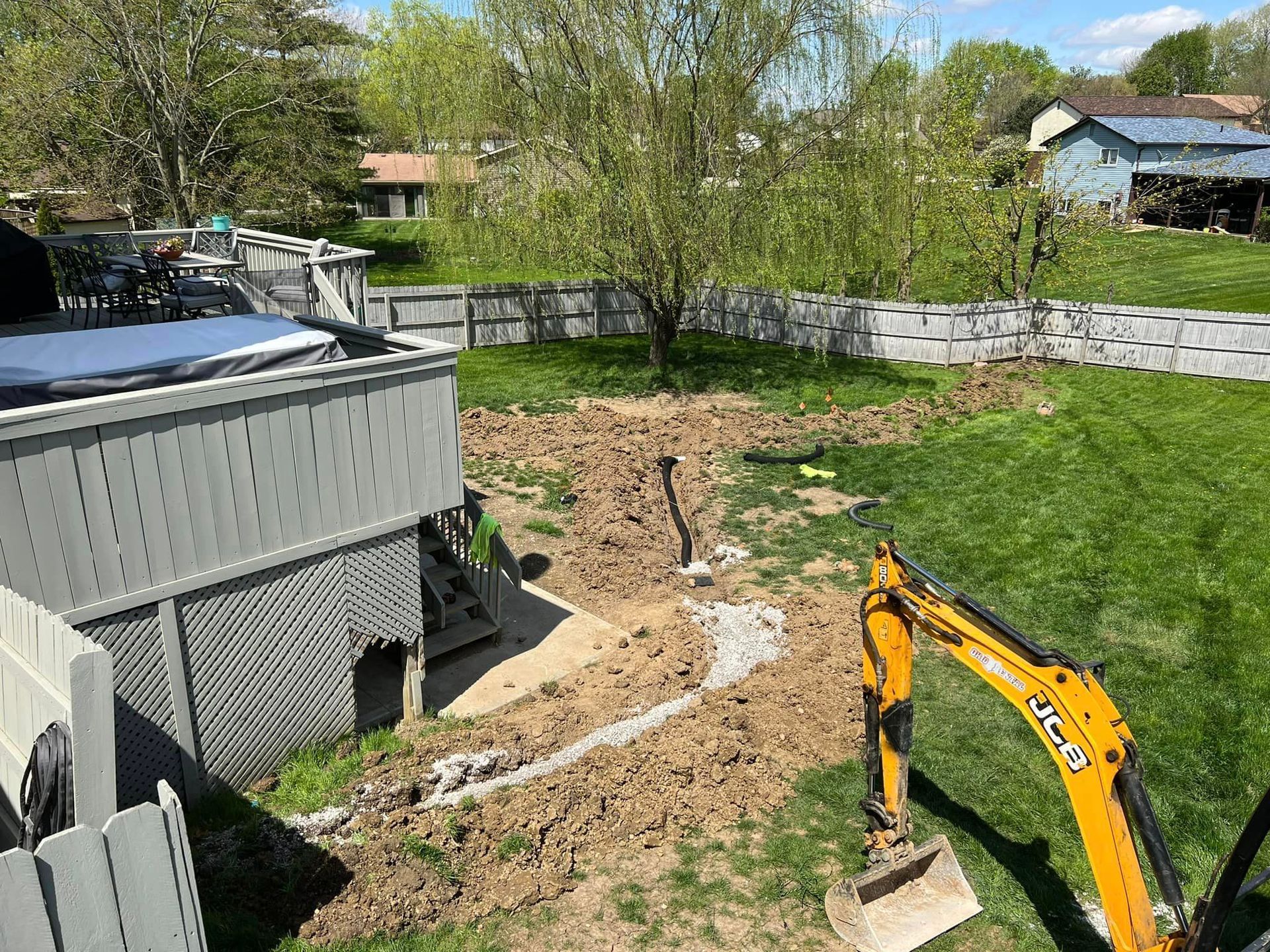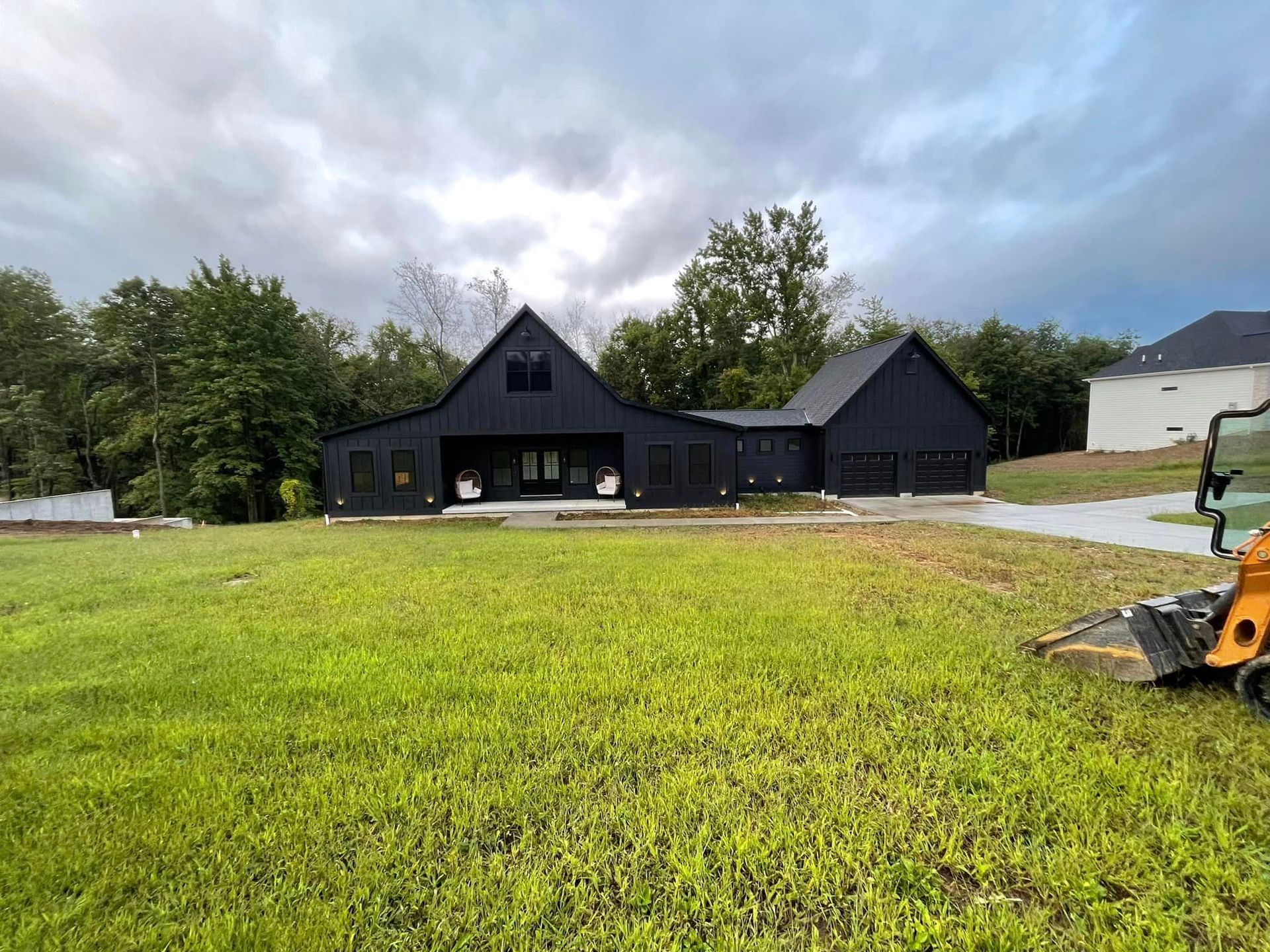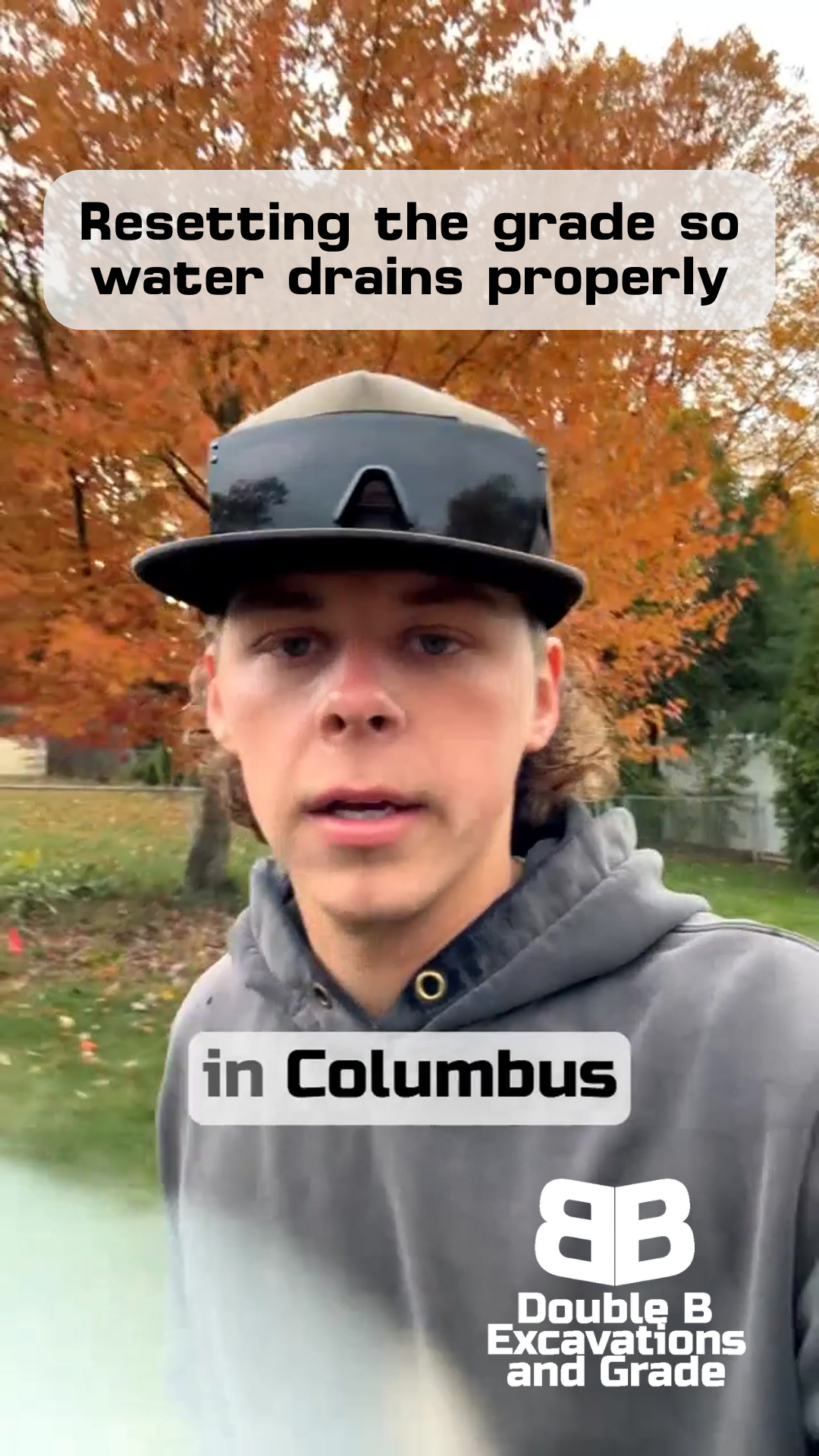Level Ground Matters: How Proper Site Prep Saves Time on Stone Work
Double B Excavations & Grade LLC
You Can’t Just Dump Stone and Hope
A LEVEL PAD STARTS WITH A SOLID BASE
You've probably heard it before: "Why not just dump the stone and level it out?"
It's a question we get all the time, and I heard it again this week at our Utica camper pad project.
Seems like it would save time, right?
Well, after years of fixing other people's rushed stone work, I can tell you that skipping proper site prep is like trying to build a house on sand - it might look good for a minute, but it won't last.
Let me walk you through what we found in Utica.
We're working on a camper pad that needs to be perfectly level - not just for comfort, but for everything to work right.
When we got there, we found exactly what happens when someone takes the quick route instead of the right route.
Welcome to Double B!
The Problem with Shortcuts
Here's what we discovered on site: someone had laid 304 stone directly on clay soil with no proper foundation. Now, if you're not familiar with stone work, that might sound okay. But push on that stone, and you'll watch it sink right into the clay. That's not going to hold up under a camper's weight.
We see these shortcuts all the time:
- Laying stone directly on unstable ground
- Using the wrong type of stone (or mixing different types hoping it'll work)
- Skipping the grading process to "save time"
The problem is, these shortcuts always end up costing more in the long run.
That stone sinks, shifts, and creates low spots. Water pools up. Equipment gets stuck. And eventually, someone has to come out and do the whole job over again - the right way this time. That's exactly why we're at this site in Utica, fixing what should have been done right the first time.
The Right Way: Ground-Up Approach
Let me show you how we're handling this Utica project the right way. First thing we did was strip everything back and take a good look at what we're working with. We've got our laser level set up - and let me tell you, your eyes can fool you. What looks level at first glance usually isn't. In this case, we could see the ground wanting to slope in one direction.
This is where that extra time up front saves you hours later. We're grading the dirt first, getting everything as close to level as we can before a single stone gets laid. Think about it like painting a wall - you don't just slap paint on bumpy drywall and hope for the best. You prep the surface first. Same principle here.
The Stone Layer Process
Now, here's where the real magic happens. We're not just throwing down whatever stone we have lying around. There's a specific process that we follow:
First comes our #2 stone - these are the bigger pieces that create a solid foundation. They lock together and give you something that won't sink into that clay soil. Think of it like building blocks - you need that solid base layer.
Then we'll add 304s. These smaller stones fill in the gaps and help create a stable surface. When it's all properly compacted, this gives you a pad that can handle serious weight without shifting or sinking.
Finally, we'll top it with a finish layer that matches what the customer needs for their camper. But here's the key - because we took the time to grade the dirt first, each layer of stone goes down smoother and more level. Nine times out of ten, when your base is level, everything else wants to stay level too. That means less time adjusting and releveling as we go.
Does this process take more time up front? Sure does. But it's a lot faster than having to dig everything up and start over because someone tried to cut corners.
Time and Cost Benefits
Here's something I've learned over years of doing this work: rushing never saves money. Take our Utica project - yes, we spent extra time getting that dirt level first. But think about what that saves: less stone needed for filling low spots, less time trying to level uneven layers, and most importantly, no callbacks to fix problems later.
When you do it right, you only pay once. When you do it wrong, you pay twice - once for the quick fix, and again for someone like us to come out and do it right. Not to mention the headaches of dealing with an unlevel camper pad in the meantime. Trust me, I've seen enough of these repairs to know the math always works out in favor of doing it right the first time.
Real Results
Looking at our progress in Utica, you can already see the difference. Where we once had stone sinking into clay, we now have a properly prepared surface ready for our stone layers. Each step builds on the last one, creating something that's going to last.
We keep our laser level set up throughout the whole process, checking as we go. It might seem like overkill, but when you're parking a camper that needs to be perfectly level to function right, these details matter. The end result isn't just a pad - it's peace of mind knowing everything's been done right from the ground up.
Closing Thoughts
At the end of the day, proper site prep isn't just about moving dirt around. It's about understanding how each layer works together to create something that lasts. Whether you're building a camper pad, a driveway, or any other stone surface, the principle stays the same: your final result is only as good as your foundation.
If you're planning any kind of stone work in central Ohio, take it from someone who's fixed plenty of rushed jobs - invest in proper site prep. It's worth every minute spent. Have questions about your project? We're always happy to take a look and share our thoughts on the right approach for your specific situation.
Remember: when it comes to stone work, level ground matters. Everything else is just building on that foundation.
